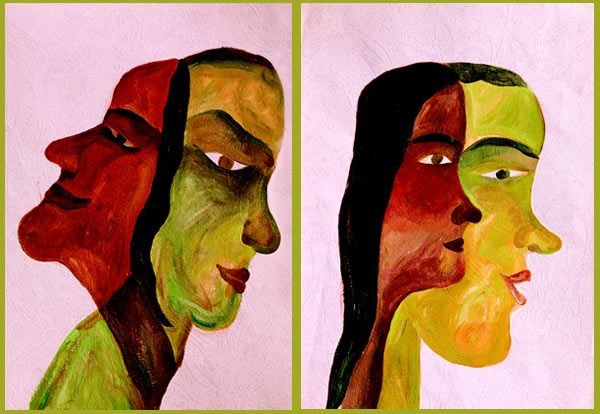 Emotional eating is a yearning for something that reaches far beyond nutritional fuel. Stress often triggers us to indulge in emotional eating. When we are emotionally hungry we may be starving for love and understanding; we may be yearning for respect, acceptance, or a sense of belonging. Transitions during the day are common stressful times when many of us become vulnerable to emotional eating.
Emotional eating is a yearning for something that reaches far beyond nutritional fuel. Stress often triggers us to indulge in emotional eating. When we are emotionally hungry we may be starving for love and understanding; we may be yearning for respect, acceptance, or a sense of belonging. Transitions during the day are common stressful times when many of us become vulnerable to emotional eating.
Repeatedly, I hear from my weight loss clients that the in-between times throughout their days—the times when they’re shifting from one activity to another—are challenging and often lead to emotional eating and compulsive snacking.
For example, the transition time of:
- Driving from one destination to another
- Shifting from one project to another (at work or at home)
- Coming home from work (shifting from work activities to home activities)
- Getting ready for bedtime (shifting from evening activities to sleep)
Emotional eating is “using” food in an attempt to mood-alter or push down painful and uncomfortable feelings. In this mode, feelings may be viewed as enemies that need to be avoided. While indulging in emotional eating, we may succeed in avoiding some feelings, but after overeating, we often have a new set of feelings to deal with…guilt, shame, and in some cases, self-loathing.
Unfortunately, attempting to push down our uncomfortable feelings by consuming large amounts of food is routine behavior in America today. Unhealthy emotional eating habits—in combination with cravings for the wrong foods and a lack of exercise—has become the national recipe for staying stuck and adding inches and pounds each year. According to the Centers for Disease Control (CDC), more than 60% of American adults are overweight. We are bombarded by messages from various health care experts today—messages that repeatedly warn us that being overweight can be hazardous to our health and well-being.
My weight-loss work with clients who emotionally overeat includes exploring what feelings lie below the surface of the unwanted behavior. Once the hidden underlying layers are identified, then unconscious emotional eating can be addressed. Subsequently, people learn how to use tools that encourage them to deal directly with their emotions and the stresses in their lives.
In my private practice, before I teach clients tools and strategies for breaking unwanted overeating habits, we often investigate under the topsoil. For instance, if a client is deriving a benefit or a secondary gain from indulging in emotional eating or from being overweight—then there may be a protective part in the client that will unconsciously rebel against changing. For this reason, one of my early questions to anyone wanting to break an unhealthy habit is offered to investigate whether there is any hidden benefit resulting from the habit. If there is a benefit or a secondary gain, then that’s where we focus our initial attention.
For example, a few years ago a middle-aged woman named Katie came to see me in my private practice. Katie’s doctor referred her to me. For health purposes, her doctor encouraged her to lose weight. During our first session, Katie explained to me that she’d been struggling with unhealthy habits of emotional eating, and subsequent weight gain ever since her divorce fifteen years ago. I learned that Katie had experienced a major (and stressful) “life transition.”
Katie explained, with tears streaming, that her husband asked for a divorce after he began an affair with a woman twenty years his junior. Katie felt devastated that her 27-year marriage was over. And, Katie’s ex-husband was never willing to seek couples counseling with her. In fact, he was already engaged to marry the younger woman when he told Katie that he wanted a divorce.
Katie identified her secondary gain for being overweight within her first couple of sessions. Katie hesitantly admitted that she used her weight as an excuse for the fact that she hadn’t had a date since her husband left. She shared that she isolated herself a lot after work and that food was a comfort to her. As we explored this further, it became clear that since the disintegration of her marriage, Katie lost her ability to trust a man with her heart. She turned to food for comfort and pleasure. She also realized that she “used food” to push down her anger, her sadness, and her overwhelming loneliness.
So, before we worked on weight loss, Katie and I focused on the unresolved grief that she harbored stemming from her marriage ending. After Katie moved through various stages of her unfinished grieving process, we addressed her negative core beliefs about feeling unattractive, “too old,” and unlovable. Through several empowering tools that I offered her, Katie compassionately addressed her negative core beliefs. To her surprise, she discovered that her negative core beliefs originally developed in childhood. This discovery led her to stop blaming her ex-husband for being “the creator” of her poor self-image…and she stopped feeling like a victim. Through her courageous explorations, Katie gained a much greater understanding of herself.
Next, we focused our work on uncovering the positive core beliefs that were buried under Katie’s negative core beliefs. Together, Katie and I went on a treasure hunt and “mined for gold.” And, I’m happy to say—she struck gold! Her inner gold, that is. Katie was thrilled with her new tools, insights, and personal growth. As a result of all her hard work, Katie felt strengthened at the core of her being.
When Katie began accepting invitations to parties and social activities, she was no longer focused on her feelings of being unattractive, “too old,” or unlovable. Katie was delighted to find that she now had enough internal peace, self-acceptance, and confidence—to focus on the people around her. Meanwhile, her self-conscious inward focus shifted outwardly allowing her to be interested and curious about others.
After her life became more balanced, food was no longer Katie’s only comfort or pleasure. Consequently, Katie’s weight began to drop, and her zest for life (including exercising) picked up dramatically. Within five months she was no longer emotionally eating in an attempt to push down her unmanageable feelings. Katie not only reached her weight loss goals, she moved forward into a life…that included dating again!
Finally, I’m happy to report that I have numerous clients, in addition to Katie, who no longer live to eat, but are now eating to live…healthier and happier lives. That’s why it is vital to explore under the topsoil of emotional eating, to discover what is triggering the unhealthy habit…and create a nourishing transformation.




 Endless to-do lists, long lines, traffic jams, frazzled nerves, short-tempered drivers—rushing…rushing…rushing…or is it dashing…dashing…dashing to survive another holiday?
Endless to-do lists, long lines, traffic jams, frazzled nerves, short-tempered drivers—rushing…rushing…rushing…or is it dashing…dashing…dashing to survive another holiday?